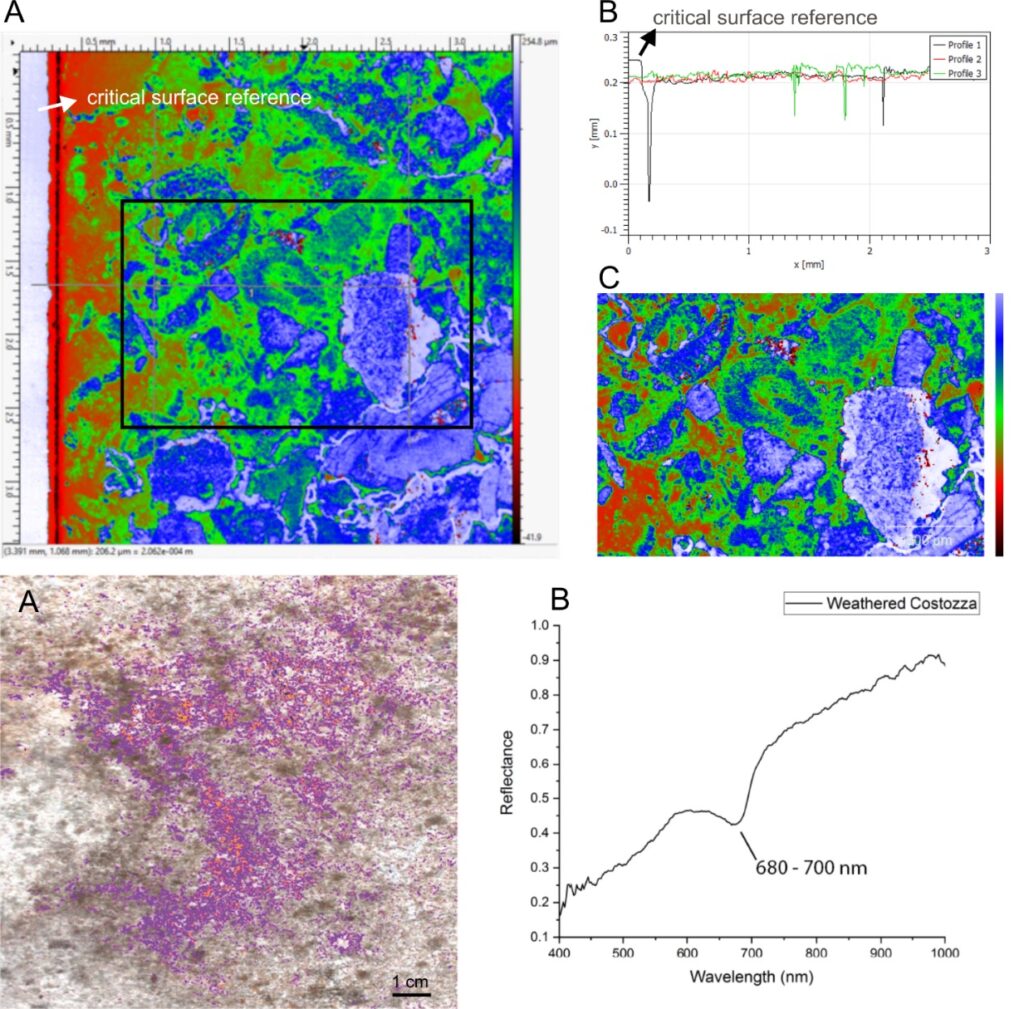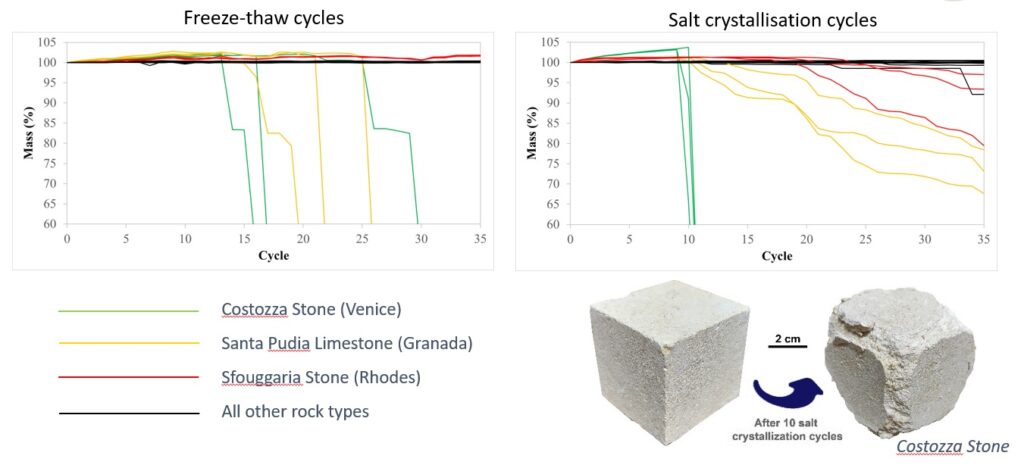The goal of University of Padova Team in the fourth work package of the HYPERION program, is to provide the characterization of stones, to refine the dose-response functions, to identify the physical decay and chemical weathering processes occurred, and to evaluate their physical-mechanical behaviour.
- Approach
The emerging hazards and vulnerability of cultural heritage under specific climate stresses will be evaluated studying the chemical and physical weathering of construction stone materials used in historical monuments. Twelve selected rock types are being characterized and tested in the laboratory for determining their decay-sensitive properties and their dose-response functions refined through specifically designed laboratory experiments and exposing the materials to outdoor conditions, in order to monitor their changes and damages in a natural setting. These data will feed a hygrothermal simulator tool for the accurate predictive assessment of ancient building materials under different risk scenarios.
- Non-destructive characterisation of physical-mechanical properties of stones
The following tests were performed in the laboratory to complete the characterisation of the physical and petrographic properties of stones carried out in collaboration with IUAV:
Determination of p-wave and s-wave velocity (Fig. 1) using equipment with suitable transducers: knowing how fast ultrasounds propagate inside a stone provides information on its homogeneity and/or compactness, and allows to estimate its physical and mechanical properties. This tool allows to evaluate in-situ the degradation of the stone mechanical properties due to deterioration.
Determination of thermal conductivity and diffusivity: knowing thermal properties of stones allows predicting their heating and cooling behaviour under sunlight radiation.

Figure 1: On the left: Ultrasonic Test performed on a sample of Carrara marble. On the right: a scheme of the propagation velocities Vp1, Vp2 and Vp3 (compression pulses) along the three perpendicular directions of a cube-shaped sample.
- Decay characterization
The laboratory investigations have been performed using hyper-spectral cameras in the VIS-SWIR range on sound stone samples; weathered materials and stones that underwent accelerated ageing tests, and a database of reference spectra have been produced.
Hyper-spectral analyses can be applied for tracking biodeterioration of weathered rocks; in Fig. 2, a map of chlorophyll absorption band (at 680-700 nm) on a weathered stone surface (Costozza limestone) is shown. By comparison to our database, it is also possible to detect the maximum capillary rise and evaluate the effect of high tides (e.g. in Venice), for example considering the absorption bands of salts (e.g., in Venice). This technique will be applied on heritage buildings and monuments, providing a non-destructive and efficient way to map deterioration patterns (e.g., the pore-filling effect of salts, the mineral replacements by secondary alteration phases, etc.).

Figure 2. Left: spectral map on the Costozza limestone of the 680-700 nm absorption band related to chlorophyll; the band depth is shallow in the purple areas, increases in the orange areas, and reaches the maximum in the dark blue spots. Right: an example of the spectra of Costozza limestone in the VIS range, where biodeterioration with chlorophyll absorption (680-700 nm) is found.
Recession rate in carbonate rocks can be evaluated by measuring the changes in time of the surface topography by using a 3D non-contact optical profilometer. This technique will be utilized for determining in a non-invasive way of cycle effects of wetting/drying in an environmental chamber using rainwaters with different composition and pH; and during field tests with the materials undergoing natural exposure to environmental stresses. Fig. 3 shows the analytical apparatus, the samples with the critical surface reference (in stainless steel pin), and a height map.

Figure 3. Top left: picture of the profilometer used. Top right: stone specimens with reference surface stainless steel pin. Bottom: profilometric height map.
The accelerated ageing tests reproduce freeze-thaw weathering and salt-crystal growth. In general, frost and salt damage of monumental stones is associated with two principal phenomena of deterioration: the cracking and formation of fissures that change the pore structure; the dissolution of matrix and the detachment/loss of material. Among the selected stone materials, Costozza (Italy), Sfouggaria (Greece) and Santa Pudia (Spain) are the weakest, as expressed by their weight loss (%) during the ageing cycles in Figure 4.

Figure 4. Weight loss (%, mass) diagrams during freeze-thaw and salt crystallization tests (data until the 35th cycle).

